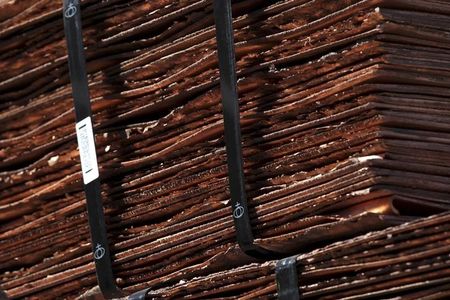Gold prices nurse losses as dollar steadies; copper dented by weak China data
2024.08.07 01:35

Investing.com– Gold prices rose slightly in Asian trade on Wednesday after falling sharply in the prior session as the dollar steadied from recent losses, with focus remaining on a potential U.S. recession and lower interest rates.
Among industrial metals, copper prices pulled back after data showed China’s copper imports weakened in June, reflecting weak demand in the world’s biggest copper importer.
Gold had initially benefited from safe haven demand as a hawkish Bank of Japan and concerns over a U.S. recession sparked steep losses in risk-driven assets, particularly stocks.
But markets rebounded on Tuesday and Wednesday, pressuring safe haven assets.
rose 0.2% to $2,393.59 an ounce, while expiring in December rose 0.1% to $2,433.70 an ounce by 00:47 ET (04:47 GMT).
Gold pressured by stock market rebound
Gold prices retreated sharply on Tuesday after coming close to a new record high earlier in the week.
A rebound in global stock markets was the biggest point of pressure on gold, as a mix of bargain buying and some hopes of a shallow U.S. recession brought traders back into markets.
The prospect of deeper U.S. interest rate cuts, especially amid fears of a recession, also helped keep risk appetite in play. But any rate cuts are also bound to support gold prices, given that lower rates reduce the opportunity cost of investing in the yellow metal.
Other precious metal prices rose on Wednesday, recouping steep losses from the prior session. surged 1% to $928.95 an ounce, while rose 0.3% to $27.290 an ounce.
Copper held back by weak China import data
Benchmark on the London Metal Exchange fell 0.6% to $8,876.0 a ton, while one-month fell 0.1% to $4.0055 a pound.
Data on Wednesday showed China’s copper imports fell 2.9% to 438,000 metric tons in July, as demand in the world’s biggest copper importer remained weak amid languid economic growth.
Still, China’s overall blew past expectations, indicating some resilience in domestic consumption.
But the country’s shrank more than expected, as were dented by recent European trade tariffs on Chinese electric vehicles. The tariffs now stand to potentially impact Chinese copper demand, given the red metal’s use in the EV industry.








